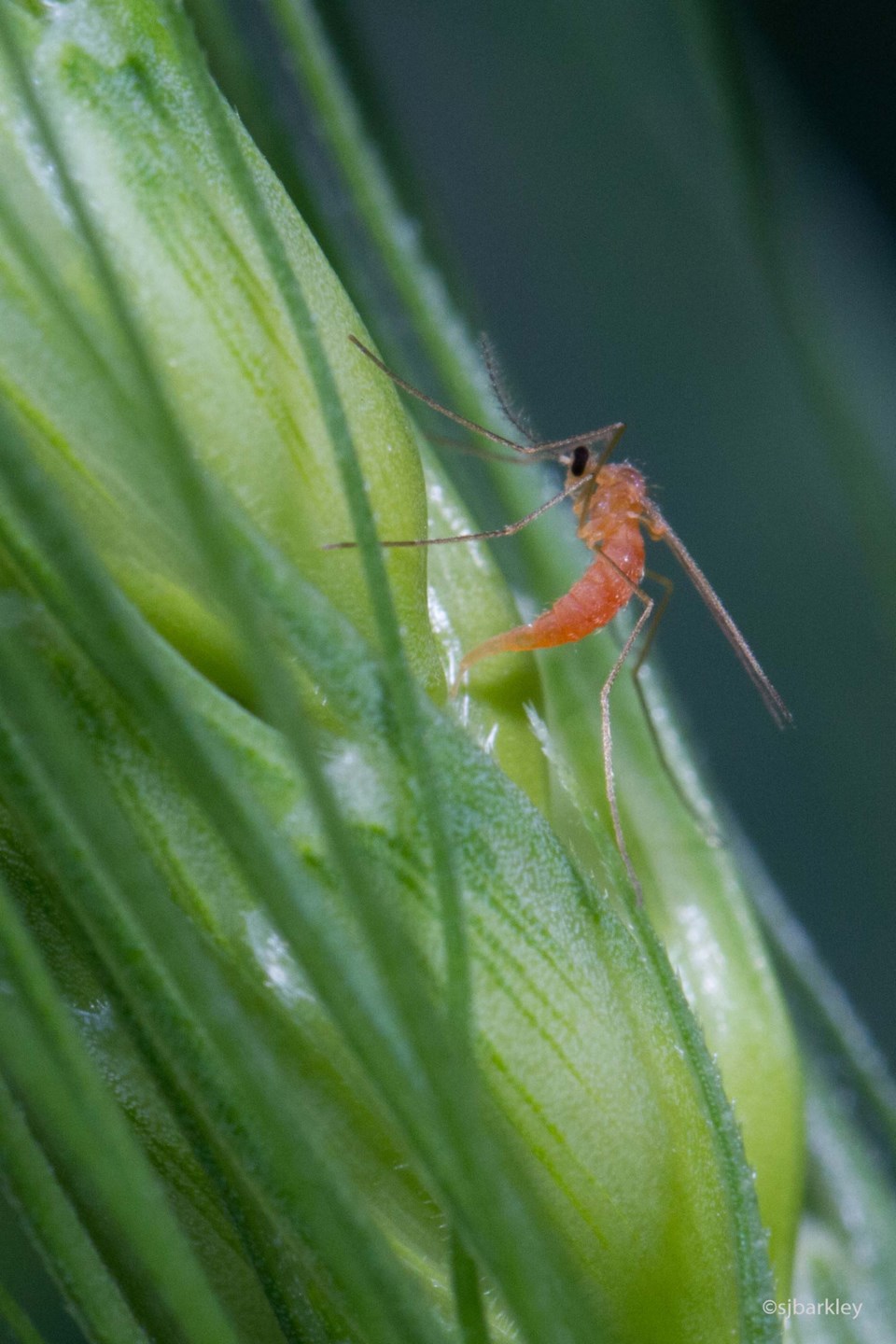New research at the University of Alberta could someday let farmers plant wheat that produces its own bug repellent.
U of A researchers will study the smell of wheat this summer as part of a project to breed plants that repel wheat midges. The project is backed with $659,850 from Genome Alberta and Results Driven Agricultural Research.
The wheat midge is an orange-red fly half the size of a mosquito, said Boyd Mori, a professor of agriculture at the U of A working on the project. Wheat midges lay eggs on wheat, causing up to $300 million in losses across the Prairies in a year as their larvae eat wheat kernels. While they can be controlled with pesticides (and, to an extent, wild parasitic wasps), those chemicals are so expensive that Alberta Agriculture recommends against their use unless a field has a serious infestation (one bad enough to lop at least 15 per cent off its yield).
Farmers currently have just one genetic defence against the wheat midge, Mori said: the Sm1 gene, which causes wheat containing it to produce proteins that kill midge larvae. Researchers are now looking for additional anti-midge traits in wheat in case the midge adapted to Sm1.
Alejandro Costamanga and his team at the University of Manitoba have discovered several wheat varieties whose scent appears to deter wheat midges from laying eggs, Mori said. This past April, Costamanga teamed up with U of A chemist James Harynuk to investigate this smell.
Costamanga’s team was growing about 40 types of wheat and taking about 3,000 samples of their scent, Mori said. Harynuk, Mori, and others at the U of A would run those samples through a gas chromatograph to identify which compounds create the midge-repulsive smell and which genes produce those compounds.
While the team could synthesize the smell to produce some sort of midge-repelling spray, Mori said it is cheaper and easier to have the wheat produce the smell itself. Once the team finds the genes behind the smell, breeders will be able to add those genes to commercial wheat strains so they can produce the smell automatically.
Wheat midge is not a big concern around Sturgeon County, with the closest outbreak yet happening in Vegreville, said André Montpetit of Sturgeon Valley Fertilizer. Still, he said this research could be useful if it leads to more midge-resistant wheat, as it will reduce the need to spray insecticides.
Mori said the team hopes to identify the anti-midge smell compounds by the end of the year. Finding the genes behind the smell, and adding them to commercial wheat, will likely take five to 10 years.
Visit youtu.be/dMYhxcQ11LY for a summary of this project.



